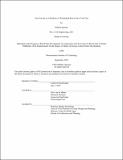| dc.contributor.advisor | Alex van de Minne. | en_US |
| dc.contributor.author | Caporaso, Philip(Philip S.) | en_US |
| dc.contributor.other | Massachusetts Institute of Technology. Center for Real Estate. Program in Real Estate Development. | en_US |
| dc.coverage.spatial | n-us-ny | en_US |
| dc.date.accessioned | 2020-01-23T17:00:25Z | |
| dc.date.available | 2020-01-23T17:00:25Z | |
| dc.date.copyright | 2019 | en_US |
| dc.date.issued | 2019 | en_US |
| dc.identifier.uri | https://hdl.handle.net/1721.1/123616 | en_US |
| dc.description | This electronic version was submitted by the student author. The certified thesis is available in the Institute Archives and Special Collections. | en_US |
| dc.description | Thesis: S.M. in Real Estate Development, Massachusetts Institute of Technology, Program in Real Estate Development in conjunction with the Center for Real Estate, 2019 | en_US |
| dc.description | Cataloged from PDF version of thesis. | en_US |
| dc.description | Includes bibliographical references (pages 28-29). | en_US |
| dc.description.abstract | Real estate developers and investors have a vested interest in discovering new techniques for estimating the direction and magnitude of changes in residential rent within a neighborhood. This study hypothesizes, and finds evidence, that taxi activity is a proxy for changing income and neighborhood quality as well as an indicator of gentrification. Novel research is performed to determine if taxi activity is a significant predictor of rents in New York City at the neighborhood level. Nine OLS regression models are created using data about 1,466,234,991 taxi pickups and drop-offs, median rent, and median income across 188 neighborhoods in New York City in the years of 2010-2015. In all nine models, taxi activity is found to be a statistically significant predictor of rent at 99% confidence. This study finds that a I standard deviation positive shock in taxi drop-offs will result in a 0.009% 0.155% higher rent the next year on average. | en_US |
| dc.description.statementofresponsibility | by Philip Caporaso. | en_US |
| dc.format.extent | 29 pages | en_US |
| dc.language.iso | eng | en_US |
| dc.publisher | Massachusetts Institute of Technology | en_US |
| dc.rights | MIT theses are protected by copyright. They may be viewed, downloaded, or printed from this source but further reproduction or distribution in any format is prohibited without written permission. | en_US |
| dc.rights.uri | http://dspace.mit.edu/handle/1721.1/7582 | en_US |
| dc.subject | Center for Real Estate. Program in Real Estate Development. | en_US |
| dc.title | Taxi activity as a predictor of residential rent in New York City | en_US |
| dc.type | Thesis | en_US |
| dc.description.degree | S.M. in Real Estate Development | en_US |
| dc.contributor.department | Massachusetts Institute of Technology. Center for Real Estate. Program in Real Estate Development | en_US |
| dc.contributor.department | Massachusetts Institute of Technology. Center for Real Estate | |
| dc.identifier.oclc | 1135875319 | en_US |
| dc.description.collection | S.M.inRealEstateDevelopment Massachusetts Institute of Technology, Program in Real Estate Development in conjunction with the Center for Real Estate | en_US |
| dspace.imported | 2020-03-09T19:59:43Z | en_US |

